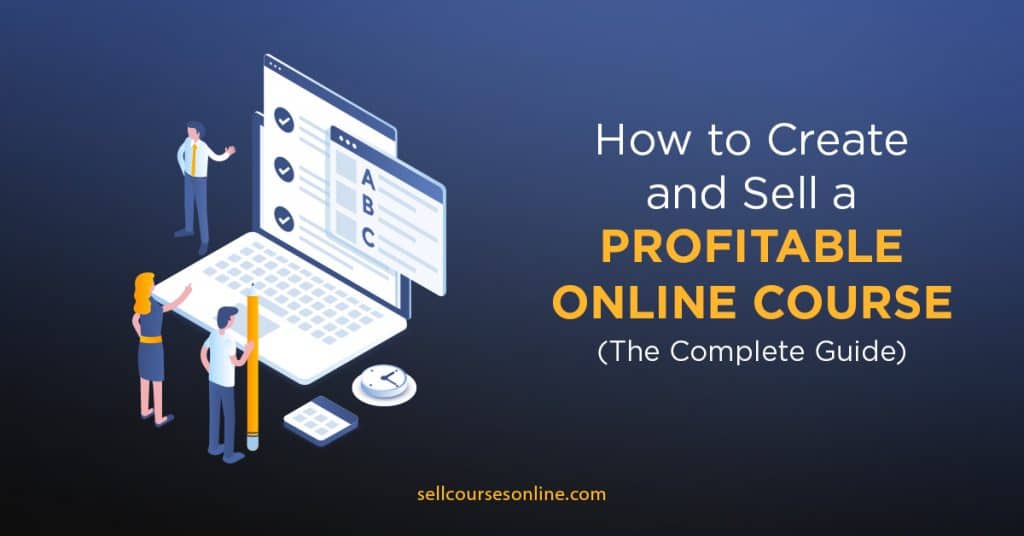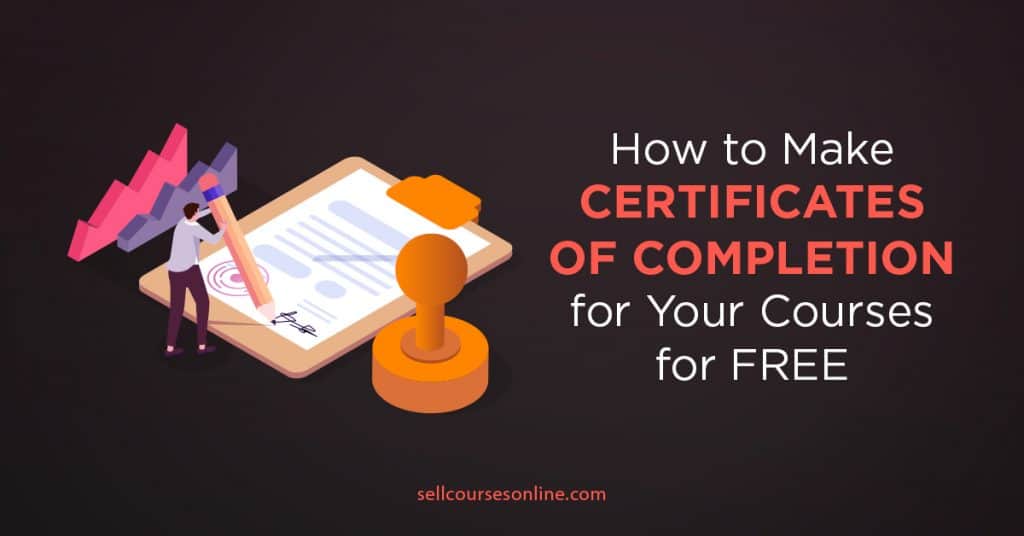If you’re wondering how much money you can make with online courses, then you’ll love this guide.
The huge demand for online learning and the abundance of course creation tools have made it easy to share knowledge and make money.
You may be in it for the pure good of educating others, but if it’s your business, this question has likely come up in your head multiple times. And we get this asked almost daily.
So, how much can you make selling online courses?
Short answer: you can make anywhere between $0 – $50k+ per month selling online courses, while most successful course creators earn $1k – $10k per month.
Having said that, your actual course revenue will depend on a few different factors, and this article will help you estimate a realistic revenue figure for your online course business.
Let’s begin.
How Much Money Do Course Creators Make?
There are many inspiring stories of solopreneurs building life-changing income streams with online courses, and you can find such stories in almost all the niches.
If you pick the technology niche, you’ve someone like Rob Percival, who teaches web development and coding courses on Udemy. He has two million+ students enrolled in his courses, and he makes upwards of $1 million every year.

Talking about the business niche, you’ve David Young. He runs Drone Launch Academy, where he teaches others how to use drones for business, and his monthly revenue is $50k+.

In the personal development industry, you can find many creators making six-figure incomes. One such instructor is Marilyn Alaura, and she made more than $500k with her courses in 2021.

In the hobby niche, my favorite example is Textile.org. They have two courses taught by the renowned artist Sue Stone, which generate multiple five-figure revenues for the online business.

I know what you’re thinking – “Baidhurya, these are the most successful people in their respective industries, and numbers like these can’t be the norm.”
You’re correct. But the idea behind sharing these examples is just to tell you what’s possible.
Now, let me share with you some examples of everyday people making decent income with online courses.
Andrea Bizzoto teaches coding courses on Udemy and through his Teachable website. As per his income report, he made $43,000 in 2020, which comes to $3,580 per month.

One of my favorite examples is this online course by succulentsandsunshine.com.
Succulents are a super-specific niche, but this course creator wasn’t afraid of operating in a small niche. In 2018, Cassidy, the founder of Succulents and Sunshine, made $200,000 from her blog. That’s also a combination of other incomes, but her course played a large part in it.

Now that we’ve seen examples of successful course creators, let’s look at some average numbers.
As per Udemy’s SEC filing, the average instructor earnings on the platform was $2,950 in 2020, while 9,000+ instructors made more than $1,000 in revenue. So if you do the math, the average instructor earning comes out to $250 per month.

When you look at Thinkific’s numbers, you’ll find that it has 29,200 paying customers as of Q2 2021. If you divide Thinkific’s gross merchandise volume by the number of paying instructors, you’ll see that the average earning of Thinkific creators (paid plans) is around $1,200 per month.
Even Teachable published some data about their schools’ earnings, but it is a bit misleading. As per their study, almost 64% of their ‘top schools’ earn more than $2,500 per month.

However, there is a catch here. Teachable has included only the top schools in this study, so the average monthly revenue for instructors on the platform will be lower.
While the revenue potential for online courses is very high, the average instructor income is much lower. Therefore, it’s important to understand what factors influence course earnings, which we’ll discuss next.
The Key Factors Influencing Online Course Revenue
Several different factors influence your online course earnings, and we’ll discuss the most important ones in this section.
Your Course Niche
Your niche is the single biggest factor in determining how much your course can make, and some niches perform better than others.
Generally speaking, niches that teach others to make more money or save money have the highest earning potential. This is why niches like business, personal finance, information technology, career development, etc., are so profitable.
On the other hand, niches with no direct return have relatively lower earning potential. So, for example, top courses in hobby niches, pet training, etc., don’t make as much.
Another factor you need to consider is the level of competition and saturation. For example, courses on digital marketing are undeniably popular, but you will be up against 1,000s of other courses teaching similar topics, making it difficult to stand out.
So, it might make sense to get more specific and create online courses targeted at a niche audience. This lowers the competition and increases the chances of success.
Course Pricing
The price of your course is an important factor in deciding how much you actually earn.
And it’s tricky because if you price too high, you may not make enough sales. If you price too low, you may sell more but still not reach your revenue goals.
The optimal price should sit comfortably with your audience — a bit expensive but not out of reach and totally worth it.

So, you should spend time analyzing your market, the competition, and your audience thoroughly before deciding the price of your first course.
Plus, you should make a conscious effort to increase the perceived value of your course, so you can price higher without affecting your conversion rate.
Audience Size
Your audience size is the biggest factor in determining your course revenue. When I say audience, it includes your email list, your social media followers, and even your network.
If you don’t have an audience, you won’t make any money selling online courses. In this case, your niche’s earning potential or anything else doesn’t matter.
On the other hand, If you already have a large audience, you’re likely to make significant revenue from your online course.
There are other factors that will determine your actual revenue, but having an audience means that there are people interested in what you offer and that you’ll make some money.
Conversion Rate
The final factor in determining your course income is the conversion rate – how many people coming to your funnel convert into sales.
So, if 1,000 people are on your email list and you sold 25 copies of the online course, your conversion rate is 2.5%.
To calculate your online course income, multiply the size of your audience with the conversion rate and your course price.

Now, your conversion rate depends on a few different factors, including your funnel, the lead magnet, email copy, engagement strategy, sales page design, etc.
Online Course Revenue Calculator
We’ve built an earnings calculator that will help you estimate your revenue from your online course based on your course price, audience size, and conversion rate.
Conversion rates for online courses vary based on various factors like price, audience engagement, marketing strategy, etc. However, here are some general conversion rates:
- Low – 0.1% – 1%
- Average – 1% – 4%
- Excellent – 4% and above
Simply enter relevant data into the fields below to get a good estimate of how much you will earn from your online course.
What the calculator shows will be your gross earnings and also profits after subtracting the cost of course development. Remember to subtract your marketing expenses to get the net profit.
How to Maximize Your Online Course Revenue
Once your course is live and gaining traction, there are various steps you can take to maximize your revenue and earnings potential.
Some of these strategies help you improve your conversion rate, while others help generate additional revenues by providing add-on products and services.
Make Your Course More Valuable
Rather than just raising your course price, I suggest you first focus on increasing the value that your online course offers. Because when your course is more valuable, you can charge a higher price and make more money.
First, there are some non-negotiables for selling online courses, and the most important one is course quality.
The most important dimension of quality is how much value does your course content gives. Here are some general rules for that:
- You provide realistic and definable upfront goals.
- Your course is well-structured and follows sound design principles.
- The content is interactive and is available in multiple modalities.
- The course is engaging and delivers the promised results.
The other dimension of quality is that your course materials look professional. For example, if you’re creating videos, you should target at least 1080p video quality. Plus, it’s important to record good-quality audio.

On top of that, you should consider adding other benefits to your course. Successful online courses offer additional benefits like student community, live Q&A calls, and other bonus materials.
For example, when you enroll in Stu McLaren’s The Membership Experience, you get access to an exclusive FB Group. Plus, he goes live every weekday during the length of the course to answer questions.
This is the reason why he can successfully sell a course priced at $2k. Overall, providing more value to your students will allow you to charge more, so incorporate this into every aspect of your course creation.
Offer Upsells and Add-Ons
Consider creating pricing tiers to give the students more options to choose from rather than relying on a single pricing plan.
They can decide what features and assistance they want and select the course package accordingly. You can also introduce some addons for an extra price that add to the value of your course.
For example, you can have two course tiers where the first one offers just the core course while the second tier offers group coaching to the students. And you can charge an additional amount for the second tier.
This is exactly what Matt Johnson does for his video editing course. His Pro tier offers additional courses and access to raw footage, and it is priced $50 higher than the Basic plan.

Apart from creating course packages, you can also do upsells on the thank you page. For example, you can upsell a subscription on your course thank you page if you have a membership site.
The idea behind upsells is to increase your average customer spend and increase your overall business revenue.
Plus, you can always launch new courses and even grow your business into a fully-fledged online school to increase your earnings potential.
Improve Your Funnel Conversion
A funnel is a set of steps that takes your target audience from their initial interest towards a sale, and it plays the biggest role in converting your prospects into paying customers.
Most marketers attract prospects through free content like blog posts, videos, and podcasts. Offering free content at the top of your funnel allows you to show your expertise and capture your audience’s interest.
After that, you can offer a lead magnet (e.g., free eBook, checklist, etc.) to capture your audience’s email address and then send them valuable emails to build a relationship.

A sample lead magnet to capture leads and build a relationship with your audience
Plus, this process is automated. That’s why a sales funnel is so important — it saves you an ocean of time when trying to convert your customers.
Now, if you have an existing funnel, you should work to improve the conversions. Here are some tips to help you do that:
- You should incorporate social proof in your funnel. For that, you can use testimonials, case studies, social media posts, etc.
- Your funnel must have a strong scarcity component. You can open enrollment for a short duration, offer a discount for a limited period, or limit the number of spots available in your course.
- Incorporating live webinars can be a super-effective way to increase sales conversions if you sell a higher-priced course.
Grow Your Audience
I know I am stating the obvious, but increasing your audience size is the best way to increase your course revenue beyond a point.
To grow your audience, you need to get new people into your funnel, and there are several ways to do that.
You can start by targeting organic traffic sources like Google, Youtube, Facebook, LinkedIn, etc. And then you can leverage paid traffic sources like Google Ads and FB Ads.
Another strategy that works very well is to recruit affiliates and get them to promote your course.
I’m not going to get into the details of all these strategies here as it’s a huge topic. But you can check out our in-depth guide about marketing online courses.
Conclusion
As we saw in this article, many course creators make a full-time income with online courses. You can find many examples of creators making $10k or even $50k+ every month even though the average creator earning is much lower.
How much revenue you actually make is a factor of several things, including your audience size, niche, course, pricing, marketing strategy, etc.
To be successful, you need to find a profitable online course idea, create awesome content, and craft a winning marketing strategy.
This is a lot of work, and I recommend you check out our epic guide on creating and selling online courses to get started.
We hope this article helped you get an answer to how much can you make selling online courses. If you have any questions or comments, please leave a comment below!






